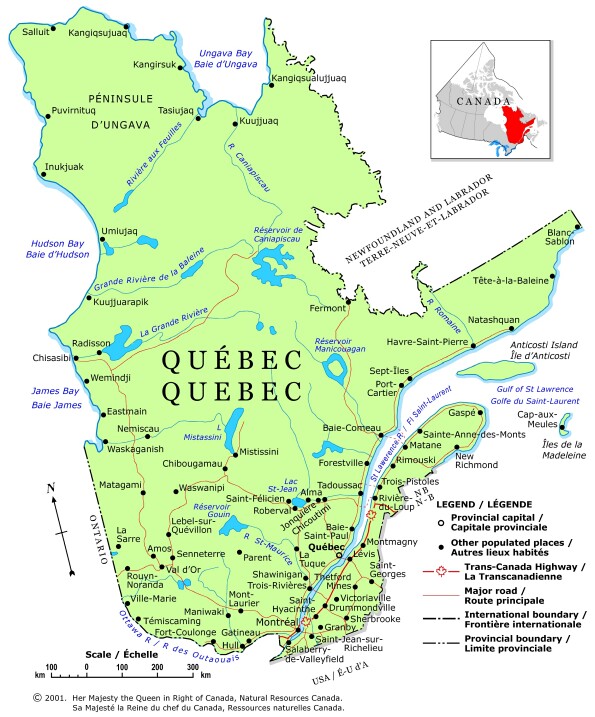

|
 |
Quebec
The Land
Bordered by Ontario, New Brunswick and Labrador (the mainland portion of the
province of Newfoundland) and by the United States, Quebec has an area of 1 450
680 km2, three times that of France and seven times that of Great
Britain, making it the largest of Canada's provinces. The province is almost
entirely surrounded by water: by Hudson Strait to the north, the St. Lawrence
River and Gulf to the south, and James Bay and Hudson Bay to the west.
From north to south, Quebec takes in three main geographical regions: the Canadian Shield, the St. Lawrence Lowlands and the Appalachian Mountains. Extending from the shores of the Canadian Arctic to the Laurentians, the Canadian Shield covers about 60 percent of the land mass and is the world's oldest mountain range. Permafrost reigns in the northern part of the Shield; only dwarf birches and lichen are able to grow there.
The St. Lawrence River, the province's dominant geographical feature, links the Atlantic Ocean with the Great Lakes. The St. Lawrence Lowlands are dotted with more than a million lakes and rivers. Quebec's forests are equal in area to those of Sweden and Norway combined.
To the south, the foothills of the Appalachians separate Quebec from the United States.
Almost 80 percent of Quebeckers live in urban centres located along the St. Lawrence. Montreal and its suburbs have a population of over three million; Quebec City is the province's capital.
![]()